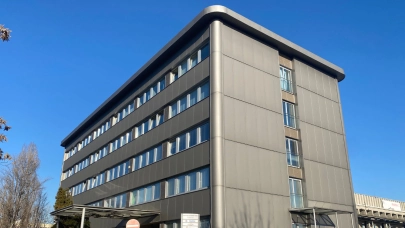
European markets with low levels of existing flexible workspace have seen the greatest growth in new flex operations over the first half of 2020, according to the latest flexible workspace report by Colliers International.
The Flex Forward report released today highlights how markets such as Hamburg, Vienna, Moscow and St. Petersburg saw relatively strong flexible workspace take-up levels during the first half of 2020, accounting for up to 30 per cent of total office take-up. Although there were some notable cancellations in commitments, 162,000 sqm of new flexible workspace opened bringing the flexible share of modern office space to just under two per cent, on average in the region. While the volume of flexible office expansion has slowed, there has been a 1.6 per cent expansion in the first half of 2020.
Tom Sleigh, Head of Flexible Workspace Consultancy at Colliers said: “The office has been a key focal point of the pandemic as across the world people have suddenly found themselves working in a new environment, usually at home on their kitchen tables or in dedicated home offices. While the flexible workspace sector has not been immune to the effects of the pandemic there is no need for concern around a sector demise.
“Instead we are seeing occupiers’ real estate practices becoming more modern and occupiers looking to utilise flexible solutions in the industry to tackle short, as well as medium-term challenges. Landlords are also increasingly enquiring about how they can diversify their asset offering into this market, indicating that there will be further growth in the sector over the next year or so.”
Throughout the last five years, the supply of flexible workspace in the region has accelerated three-fold. Although WeWork and IWG are significant players in the market, their dominance is being challenged by the growing number of multi-market and multi-site operators and owner-operators. There are more than 1,300 operators providing workspace in more than 3,300 locations across the 42 markets surveyed in the report.
Istvan Toth, Associate Director and Data Scientist for EMEA Research at Colliers said: “We’ve noticed two key trends during this period, demonstrating the ability of the sector to react to significant changes in circumstance. Firstly, operators who are able to provide private work environments to their clients have been transacting well, whereas those providing pure co-working space struggled to provide the reassurance of a COVID-secure working space for occupiers. Secondly, we have seen a shift in the demand for flexible space move away from the city centre to inner and outer city locations, pointing to early stages of decentralisation as cities face density and commuting disruption.”
Take up data for H1 2020 has shown an increase in flexible workspace demand for inner-city locations to 52 per cent compared to only 38 per cent in 2018-19. Likewise, demand increased for suburban areas to 16 per cent, compared to 12 per cent in previous years.
The Flex Forward report also examined the various options for occupiers and landlords looking to utilise flexible workspace within their portfolios, setting out the various options available.
Tom added: “The beauty of this solution is its flexibility and its diversity in the EMEA region, as we see local operators are able to tailor their offering to local occupier demand. We’ve found that no one transaction or occupier agreement is the same, they all have their unique differences to suit the needs of all parties. Flex Forward offers an insight into some of these options and how they can be applied to a modern commercial real estate strategy.”



